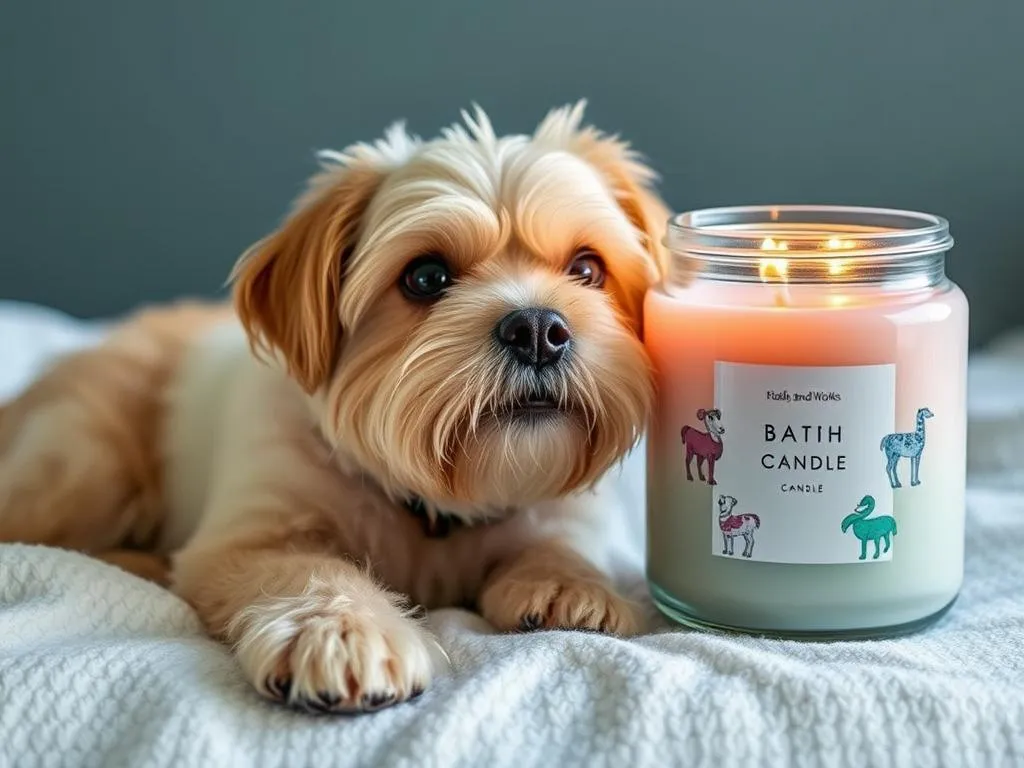
Dog health care is crucial for ensuring the well-being and longevity of our furry companions. As pet owners, we often surround ourselves with products that enhance our living spaces, such as scented candles. However, concerns arise when it comes to the safety of these products for our pets, particularly regarding Bath and Body Works candles. This article will delve into the safety of these popular candles, exploring their ingredients, potential hazards, and what alternatives exist for pet owners.
Understanding Dog Health
Importance of Canine Health Care
Proper canine health care is vital for maintaining a dog’s overall quality of life. Regular veterinary check-ups, vaccinations, and preventive care not only help in early detection of health issues but also reinforce the bond between the dog and owner. A healthy dog is more active, happier, and less prone to diseases, which ultimately enhances their lifespan.
Common Health Issues in Dogs
Dogs, like humans, can experience various health problems. Among the most common are allergies, obesity, dental issues, and skin disorders. Environmental factors, including the products we use at home, can significantly impact a dog’s health. Understanding these issues helps in creating a safe and healthy environment for our pets.
Candles and Their Ingredients
Types of Candles
Candles come in various types, each made from different materials. The most common types include paraffin, soy, and beeswax. Bath and Body Works candles are particularly popular for their unique scents and aesthetic appeal. However, their components may not always be safe for our pets.
Common Ingredients in Bath and Body Works Candles
Bath and Body Works candles typically contain a variety of ingredients, including:
- Fragrances: Often synthetic, these can contain numerous compounds that may not be safe for dogs.
- Dyes: Used to enhance the visual appeal, some dyes can cause allergic reactions.
- Waxes: The base material can be paraffin, soy, or a blend, each with different safety profiles.
Understanding the purpose of these ingredients is essential for evaluating the overall safety of these candles in a pet-friendly home.
Potential Dangers of Candles for Dogs
Toxic Ingredients
One major concern with scented candles, including those from Bath and Body Works, is the presence of potentially toxic ingredients. Some fragrances and essential oils can be harmful to dogs, leading to symptoms such as:
- Vomiting
- Diarrhea
- Excessive drooling
- Lethargy
Ingredients like essential oils (e.g., tea tree, eucalyptus) and synthetic fragrances can pose risks, especially if ingested or inhaled over time.
Risk of Allergies
Dogs can develop allergies to various substances, including candle ingredients. Common allergens found in scented candles may include:
- Synthetic fragrances
- Certain dyes
- Chemical additives
Signs of an allergic reaction can manifest as skin irritations, itching, or respiratory issues. If your dog shows any of these symptoms, it is advisable to consult a veterinarian.
Physical Hazards
Beyond the chemical risks, candles also pose physical hazards. Dogs, especially curious ones, may accidentally knock over candles, leading to burns or injuries. Additionally, if a dog ingests candle wax or wicks, it can lead to gastrointestinal blockages or toxicity.
Bath and Body Works Candles: Are They Safe?
Analysis of Ingredients
Analyzing the specific ingredients in Bath and Body Works candles reveals a mixture of synthetic and natural components. While some ingredients may be harmless, others can pose risks to dogs. For instance, the fragrances used are often complex and can vary by scent, making it difficult to generalize their safety.
Expert Opinions
Veterinarians and pet health experts often express caution regarding the use of scented candles in homes with pets. While not all dogs will react adversely, the potential for negative health effects is significant. Studies on indoor air quality suggest that burning certain candles can release harmful compounds into the air, which can affect both humans and pets.
Anecdotal Evidence
Pet owners have shared mixed experiences regarding the use of Bath and Body Works candles. Some report no issues, while others have noted adverse reactions in their dogs, ranging from mild allergies to more severe health concerns. These anecdotal accounts underscore the variability in how different dogs may respond to the same products.
Alternatives to Scented Candles
Pet-Safe Candles
For dog owners who enjoy scents in their homes, opting for pet-safe candles can be a wise choice. Brands like Pet House Candles and Pura Naturals offer candles made from natural ingredients that are free from harmful chemicals. These alternatives can provide a pleasant aroma without the associated risks.
Natural Scenting Options
Natural scenting solutions can also enhance your home’s ambiance without jeopardizing your pet’s health. Consider using:
- Essential oils: Choose dog-safe oils like lavender or chamomile, but use them sparingly and avoid diffusing them in spaces where your dog spends a lot of time.
- Herbs: Dried herbs such as rosemary or mint can add fragrance naturally.
- Fresh flowers: Some flowers are safe for dogs and can bring a lovely scent indoors.
Creating a pet-friendly home involves being mindful of the products used and opting for those that prioritize safety.
Best Practices for Dog Owners
Monitoring Your Dog’s Health
Being vigilant about your dog’s health is essential. Watch for any changes in behavior, appetite, or physical condition. Regular check-ups with your veterinarian can help in maintaining your dog’s health and addressing any concerns promptly.
Educating Yourself and Others
Ongoing education about pet safety and health is vital for all dog owners. Familiarize yourself with potential hazards in your home and share this knowledge with fellow pet owners. Resources such as veterinary websites, pet care books, and community seminars can provide valuable information.
Conclusion
In conclusion, the safety of Bath and Body Works candles for dogs is a nuanced topic. While many ingredients may not pose immediate threats, the potential for allergic reactions, toxicity, and physical hazards cannot be overlooked. It is always best to err on the side of caution. As responsible pet owners, we should prioritize our dogs’ health by evaluating the products we use in our homes and opting for safer alternatives whenever possible. By doing so, we can create a harmonious environment that keeps both our pets and ourselves safe and happy.









